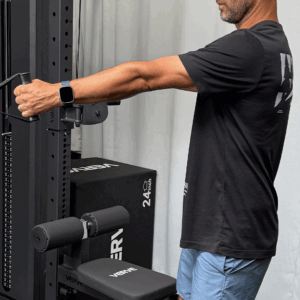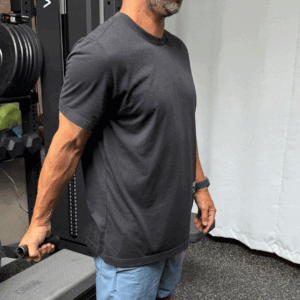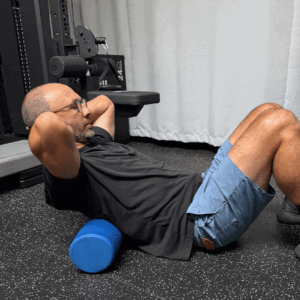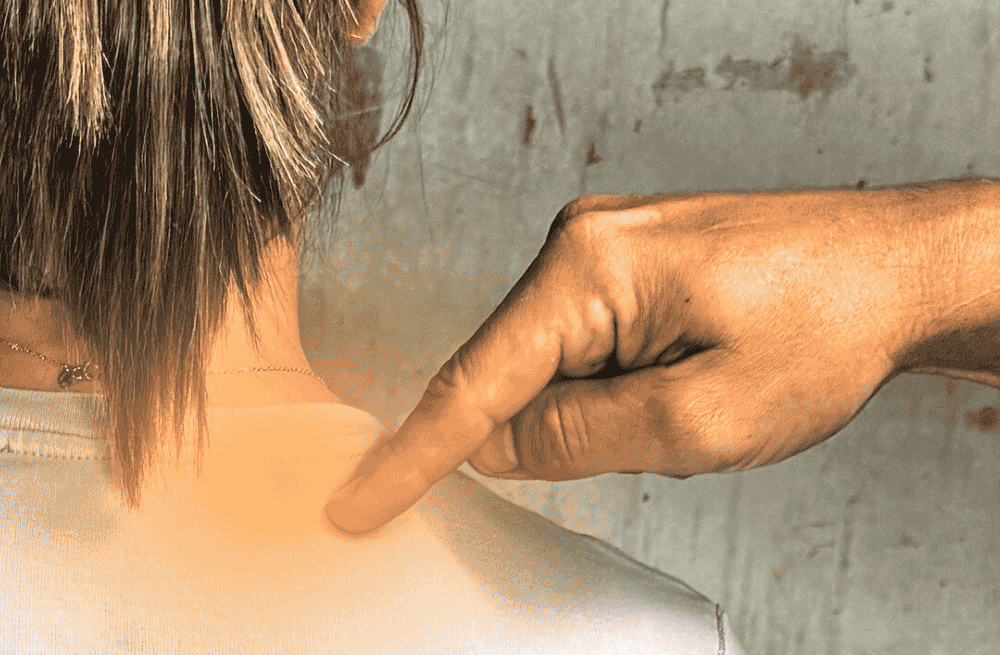At MRP Health, a really common injury we see is anterior shoulder pain. This often develops due to a sudden increase in activity and changes in training routines or exercises, prolonged periods of inactivity, or a specific injury or incident.
An increase in repetitive motions such as lifting, throwing, or even prolonged periods of sitting and inactivity can all contribute to the issue.
Common signs of anterior shoulder pain can include tenderness, stiffness, a catching feeling, and difficulty with daily tasks like reaching or lifting. A key indicator is the inability to lie on the affected side.
Our expert physiotherapist, Drew, has put together a set of at-home exercises to help manage anterior shoulder pain. Incorporating these into your routine, alongside your physio sessions, can support faster recovery and prevent discomfort from returning.


Standing Row:
-
Use a cable machine or secure a TheraBand at chest height. Stand facing the machine or anchor point, holding the handle or band with one hand.
-
Begin with your shoulder fully protracted, meaning your shoulder blade should be moved forward around your ribcage. This helps engage your muscles fully from the start.
-
As you pull, allow your shoulder blade to retract fully, moving smoothly along your back. Your shoulder should move through its full range of motion during this step.
-
Lead the movement by pulling your elbow back, and bringing your hand toward your ribs. Focus on keeping your elbow close to your body throughout the movement..
-
Slowly release the tension by extending your arm forward in a controlled manner, allowing your shoulder blade to protract again.
-
Ensure your shoulder blade moves fluidly throughout the exercise, rather than keeping it locked or isolated.
-
Choose a weight or band resistance that allows you to perform the movement without pain. Aim to go as heavy as you can while staying pain-free.
-
Perform 10–15 repetitions per set. Complete 3 sets, ensuring good form throughout each repetition.
Straight Arm Lever:
-
Using a cable machine or secure a TheraBand at chest height. Stand facing away from the machine or anchor, holding the handle or band with one hand.
-
Keep a slight bend in your elbow and maintain this position throughout the exercise.
-
Start with your hand back just past your hip by your side, then lift your hand forward, engaging your bicep as you apply tension.
-
Return your hand back past the hip in a controlled motion.
-
Begin with a lighter weight or band resistance and gradually increase as you build strength.
-
Perform 3 sets of 10-12 repetitions.


Thoracic Spine Extension:
-
Start by laying on the ground with a foam roller positioned just below your shoulder blades.
-
Gently rest your head in your hands, keeping your neck relaxed and free of tension.
-
Spread your elbows wide, opening up your chest as much as you can.
-
Slowly pivot and extend your back over the roller, feeling a gentle stretch in your thoracic spine.
-
Return to the starting position by sitting back up. You can reposition the roller to target different areas of your mid-back.
-
Continue pivoting and extending your back over the roller.
-
Perform the movement as many times as desired, focusing on the stretch and releasing any tightness.





